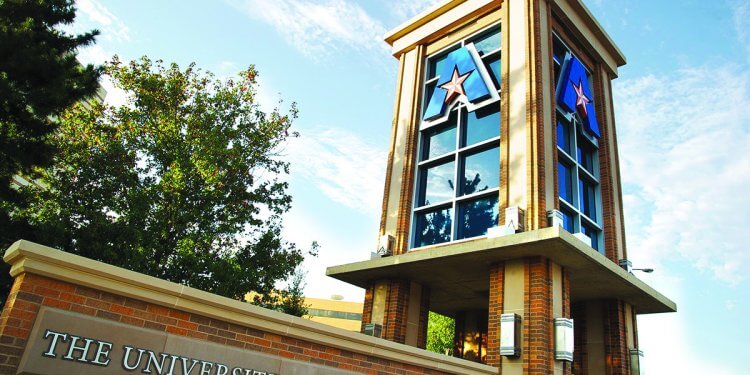Each year, high school students flood into UTA’s Maverick Activity Center for face-to-face chats with college recruiters—a higher-ed version of speed-dating. You know, the kind where nobody knows what they really want, but everyone smiles like they do.
And every year, the stakes get higher. Tuition keeps creeping up alongside eggs and Cap’n Crunch, making college feel a little like yachting: glamorous, pricey, and mostly for people who already have yachts.
Back in my day, grants, the equivalent of free money, gave the rest of us a fighting chance. Now? Survival of the fittest. Don’t have the cash? Well, there’s always the post office. This year’s AISD College Night, held Sept. 18, felt a little subdued. Most students I spoke with fell somewhere between “I-hope-I-can” and “cautiously hopeful.”
One junior from Martin High, a straight-A STEM whiz, said she was torn between Texas A&M and Rice—but paying tuition without racking up massive debt? Nearly impossible. Texas A&M runs about $34,000 a year. Rice? Nearly $60,000. Her friends told her to go for it anyway.
“You’ll land a great job,” they said. “Pay it off in, oh, 30 years. Easy.”
Average student debt? Around $40,000. National averages for 2024–25? Over $39,000. Private schools like TCU? About $57,000. Cue the collective gulp.
Recruiters themselves aren’t immune to the tension. “We’re like the bad guy now,” one recruiter who didn’t want to be identified (hmm, wonder why) told me. I’ll call him Ralph from a Midwest university.
“Part of that,” Ralph said, “is money.”
Colleges have changed tactics, highlighting campus perks beyond academics and certainly price tags: cinemas, sit-down restaurants, faster foods like Chick-fil-A—basically, a mall with dorms. I’ve noticed that a number of high-ranking colleges in U.S., News & World Report have fabulous eateries on campus; others have things like tanning beds, putting greens, and even nap pods.
But here’s the twist: college isn’t the only path anymore. Career education programs are booming, letting students graduate with certifications and a paycheck-ready skill set. Why spend $50,000 when you could start earning $50,000 tomorrow?
And let’s not forget the military, offering training, discipline, and tuition benefits down the line—no loans required. It’s structure, skill-building, and career all in one.
High school students today face a unique paradox: the pressure to plan for the future while juggling uncertainty. Some dream of the dorm experience, frat parties, or cheering in the stands in that raucous 12th Man madness at Texas A&M.
Others are more pragmatic, asking themselves if starting a trade, becoming a nurse, or joining the tech workforce might make more sense than a degree that could take decades to pay off. A few years ago, I met and wrote about a student at Sam Houston High who was learning how to repair delicate instruments such as violins. His starting salary is in the upper $40,000, right out of high school.
Don’t underestimate local internships—many Arlington companies now work directly with high school students to give real-world experience before graduation. Many of them are toiling away at the Career and Technical Center as we speak.
A former student of mine loves history but opted for a stint in the Navy instead. He’s now stationed on the East Coast and already has his five-year military plan worked out. College? Yep. But thanks to the military, he won’t be paying off massive loans. He just has to wait five years.
The “college or bust” mentality? Fading fast. Some see college as a launchpad. Others see it as one option among many. The trick is simple: know the costs, weigh the benefits, and pick the path that fits your goals.
College, career programs, military—success doesn’t live in a single address. It lives wherever it fits. And for high school students staring down the question of “what’s next?” the right answer is the one that lets them sleep at night.









